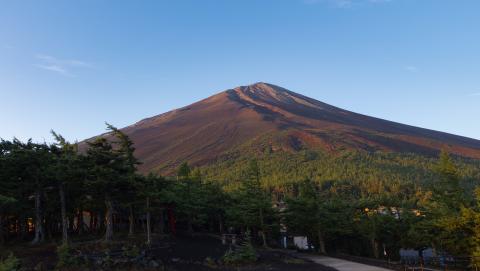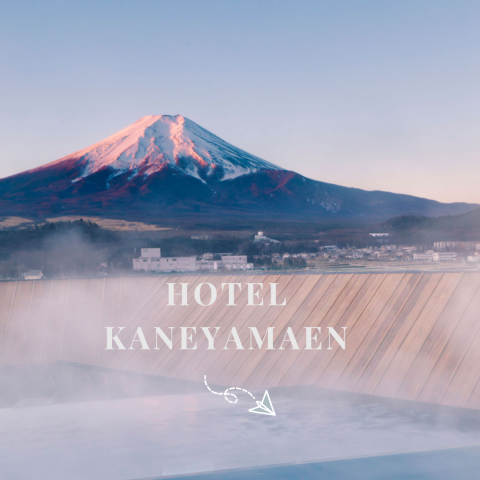Main content starts here.
Even now, one of the most representative tourist spots of Kiyosato is Seisen-Ryo.
Seisen-Ryo

▲Seisen-Ryo Old Lodge
When people think of the rural camp Seisen-Ryo, what often comes to mind is ice cream and an abundance of nature, however, it is also where Dr. Paul Rusch devoted his life to the Japanese post-war renaissance.
The name Seisen-Ryo incorporates a Japanese character from both the Kiyosato Area and the Ooizumi Village located at the southern slopes of the Yatsugatake Mountains. Combining the character "Kiyo," which can also be read as "Sei" and means "pure," along with the the character "Izumi," which can be read as "Sen" and means "springs," Rusch found joy in naming the area, “Pure Springs" (Japanese translation of "Seisen").
Paul Rusch Memorial Museum
About a 200-meter walk through Seisen-Ryo’s back forest, lies the Memorial Museum of Paul Rusch, or better known as the “Father of American Football and Kiyosato’s Revival.”


Dr. Paul Rusch loved Japan and wanted to devote himself to helping rebuild it. At the Paul Rusch Memorial Museum, you can see how he dedicated his life to the area.

▲Paul Rusch Memorial Museum
"Do your best, and it must be first class"
These words embody the ideology Dr. Rusch held close to him. At the entrance of the Memorial Museum, this quote is on the wall, alongside his photo.


In order to be number one, you must set your sights on the best.
The reason why Dr. Rusch chose Kiyosato as a symbol for revitalization of Japan, is because from here you can physically set your sights on the best, Mt. Fuji.

▲Photo provided by Seisen-Ryo/KEEP
Dr. Paul Rusch was born in the American state of Indiana and was raised in the neighboring state of Kentucky. Dr. Rusch first arrived in Japan in 1925, initially to help the YMCA (Young Mens Christian Association) with reconstruction efforts in Tokyo and Yokohama after the devastation of the Great Kantō earthquake.
As the era shifted and the Pacific War began, Dr. Rusch left for America only to later return as a member of the GHQ with the mission of reviving the Japanese island nation. Setting his sights on building Japan up from the Mountainous regions and farming villages, he began his new work right here at the foot of the Yatsugatake Mountains.
Areas with as high of an elevation as Kiyosato are unable to produce rice, and are very difficult to live in. During the food crisis after the war, it is said that those living in areas such as Kiyosato had to fend off their hunger by consuming the bark from trees. Hearing this, Dr. Rusch thought that if an area like that can one day prosper then there is nothing stopping the rest of Japan from doing the same.
With visions of developing a dairy farming industry and producing vegetables that could thrive even this climate, he opened a model plantation here in Kiyosato. That model plantation is the Kiyosato Educational Experiment Project (KEEP) that still exists to this day.
At the memorial hall, things such as the suitcases he used and other personal belongings can be seen on display. Especially impactful are the many letters he wrote in order to acquire funds for KEEP sent to America. As well as letters between him and his close companions, including Prime Minister Yoshida Shigeru, General MacArthur, and American business magnate John Rockefeller. There is also a self-written biography and lesson manuscripts.




Behind the memorial hall, you can visit the home that Paul Rusch lived in during his life in Yamanashi.

On display within the study that Dr. Rusch once used, lie dozens of thank you letters. Looking at these, you can truly understand how during his life time he greatly contributed to the revival of Kiyosato and Japan as a whole.


You can also view his bed area. It was said that Dr. Rusch did not like spending money on himself. His room was indeed small and lackluster, but on sunny days, if he were to gaze out of his window, he could take in an amazing view of Mt. Fuji.


Also in his room, you can view the gifts of origami that were sent to Dr. Rusch for his birthday from the children who lived in the area.


It is said that he was very much loved and adored by the children in the area, and he was thought of as the friendly neighborhood "grandpa" of the area. Dr. Paul Rusch spent most of his life devoted to helping Kiyosato rise from the ashes. Within the memorial museum, you can see photos of Kentucky where he was raised, as well as Kiyosato, side by side.

▲Kiyosato (left), Kentucky (right)
One might say that Dr. Rusch worked hard to help rebuild Kiyosato whilst nostalgically remembering his home in Kentucky.
Now, after knowing the history of Kiyosato, upon visiting once again, maybe it’ll feel a litte different for you. If you do have a chance to visit Kiyosato, we invite you to please check out the Paul Rusch Memorial Hall.
And don’t forget to enjoy some delicious ice cream when you’re done!!


More Info
KEEP Association website:
https://www.seisenryo.jp/spot_paulrusch1.html
Published on
- April 14, 2022
Share
-

Fuji Subaru Line 5th Station & Mt. Fuji Travel Guide
March 3, 2025
Home of Mt. Fuji > Staff Journal > Paul Rusch Memorial Museum and Seisen-Ryo

